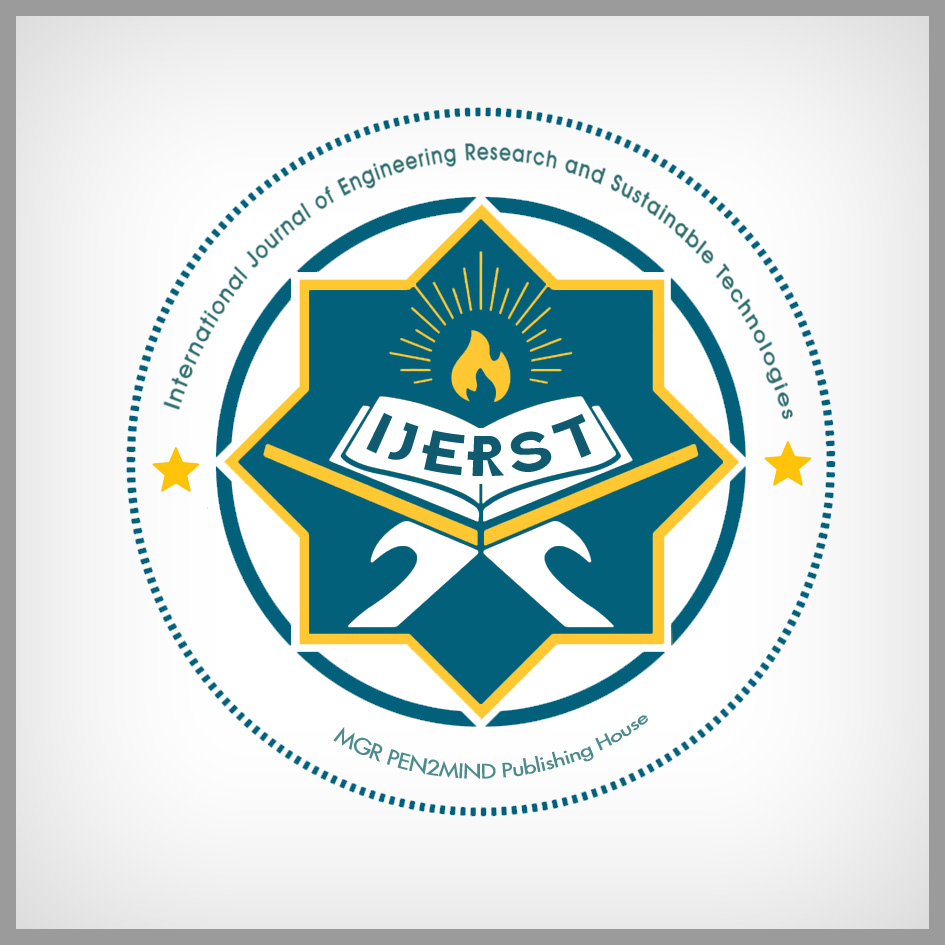SECURIG HEALTHCARE DATA IN THE CLOUD AGAINST INFERENCE ATTACKS
DOI:
https://doi.org/10.63458/ijerst.v3i1.107Keywords:
e-HealthCare cloud, electronic medical records (EHR), inference attacks, detailed access management, dual-layer encryption, hidden data access, access patterns confidentialityAbstract
The E-HealthCare cloud system demonstrates important possibilities for improving healthcare quality and the well-being of people. However, it has not spread, especially due to the most important concerns about security and privacy. Existing methods for storage rely on basic access control models and are susceptible to inference attacks. In this article, we have set up an inference attack for attacks on e-HealthCare cloud systems that use fine-tuned access controls. We propose a new approach using a two-layer encryption scheme that allows for secure and effective data manipulation. The first encryption layer contains marked access guidelines. This can be tailored to any data attribute where fine access control is achieved and encryption efforts are reduced simultaneously. As a rule, role attributes and access guidelines are hidden within a second encryption layer to protect privacy. The cloud is permitted to perform a variety of mathematically intensive tasks on behalf of the user without disclosing private data, in order to use the computing power of the cloud without affecting the confidentiality of the sensitive information. To achieve this, we develop a blind data access protocol using Paillier encryption. The results of comprehensive security analysis and performance assessments confirm that the proposed solution is as efficient and efficient as a secure cloud management system.
References
Y. Miao and colleagues, "Time Regulations and Efficient Revocation Methods for Mobile E-Health Cloud," IEEE Transactions on Mobile Computing, Vol. 5, pp. 3650-3665, May 2024, doi: 10.1109/tmc.2023.3277702.
H. Wang, J. Ning, X. Huang, G. Wei, G. S. Poh and X. Liu, "Secured, fine-grained keyword search for e-healthcare cloud", Trusted and secure computing in IEEE Transactions, Vol. 3, Pages 1307-1319,May2021,doi:10.1109/tdsc.2019.2916569.
J. Sun,Y.yuan,M.tang ,x.cheng ,x. Nie and M. U. Aftab, "Data Protection for Cloud-Enabled IoT Healthcare - Basic Fine Control," IEEE Transactions on Industrial Informatics, Vol. 9, pp. 6483-6493, September2022,2:10.1109/TI.2021.313345
K. Mahmood et al. , "Cloud-supported, secure, cost-effective, authenticated solutions for remote wearable health monitoring systems," IEEE Transactions Network Science and Engineering, Vol. 5, pp. 2710-2718, September 1st. 2023. doi: 10.1109/tnse.2022.3164936
J. Wang, X. Yin, J. Ning, S. Xu, G. Xu and X. Huang, "Cloud-based Secure and Updated Access Control for EHRS", IEEE Transactions on Services Computing, Vol. 4, pp. 2939-2953, July and August. 2023, doi: 10.1109/tsc.2022.3232 230.
W. Zhang, Y. Lin, J. Wu and T. Zhou, "e-Healthcare Cloud System. 14, no. 1, pp. 167-178, January 1st 2021, doi: 10.1109/tsc.2018.2790943.
U. R. Butt et al. , "Improved Role-Based Control Approach Using Trust Mechanisms in E-Health Cloud Environments," IEEE Access, Vol. QIU and X. Cheng, "Safe and Light Thin Data Exchange in Cloud Support and IoT-Oriented Smart Healthcare Systems," IEEE Internet Journal, Vol. 9, no. 4, pp. 2513-2526, February 15th. 2022,DOI : 10.1109/Jiot.2021.3063846
Y. Bao, W. Qiu and X. Cheng exist in the IEEE Internet of Things Journal. 9, no. 4. 2513-2526, February 15, 2022, doi: 10.1109/jiot.2021.3063846.
Jhanjhi, "Agreement and Sending of Secure Healthcare Data to IoT", IEEE Access
R. Anitha, Saswati, Mukherjee, 1201-1209 : Doi : 10.1007-3-642-41674-3-3-167
LAN Zhou ,Vijay , Varadharajan , Kanchi ,l Gopinath, (2016). Safe-Flow-based cloud storage system for encrypted patient orientation. The Computer Journal, 59(11):1593 doi:10.1093/comjnl/bxw019
Fahad, Saeed, Alamri., Ki-Dong, Lee. (2015). Secure sharing of health data over cloud.1-5.doi:10.1109/NSITNSW.2015.717 6425
Ahmed, Ibrahim. , Baban, A., Mahmood. , Mukesh, Singhal. (2016). A safe framework for joint use of electronic health records rather than clouds. 1-8. doi:10.1109/segah.2016.7586273
David, R., Matos. , Miguel, L., Sparrow. , Pedro, Adam. (2018). Ensure electronic health records in the cloud. 1- doi:10.1145/3195258.3195259
S., Prathima. , C., Priya. (2020). Data protection agencies and security management in research cloud-based electronic health records. 21-29. doi:10.1007/978-981-15-32849_3
Downloads
Published
How to Cite
Issue
Section
ARK
License
License Statement
This work is licensed under a Creative Commons Attribution 4.0 International License (CC BY 4.0).
Authors retain copyright of their articles and grant International Journal of Engineering Research in Science and Technology (IJERST) the right of first publication.
This license permits unrestricted use, distribution, and reproduction in any medium, provided the original author and source are credited.
The journal encourages open access and supports the global exchange of knowledge.




